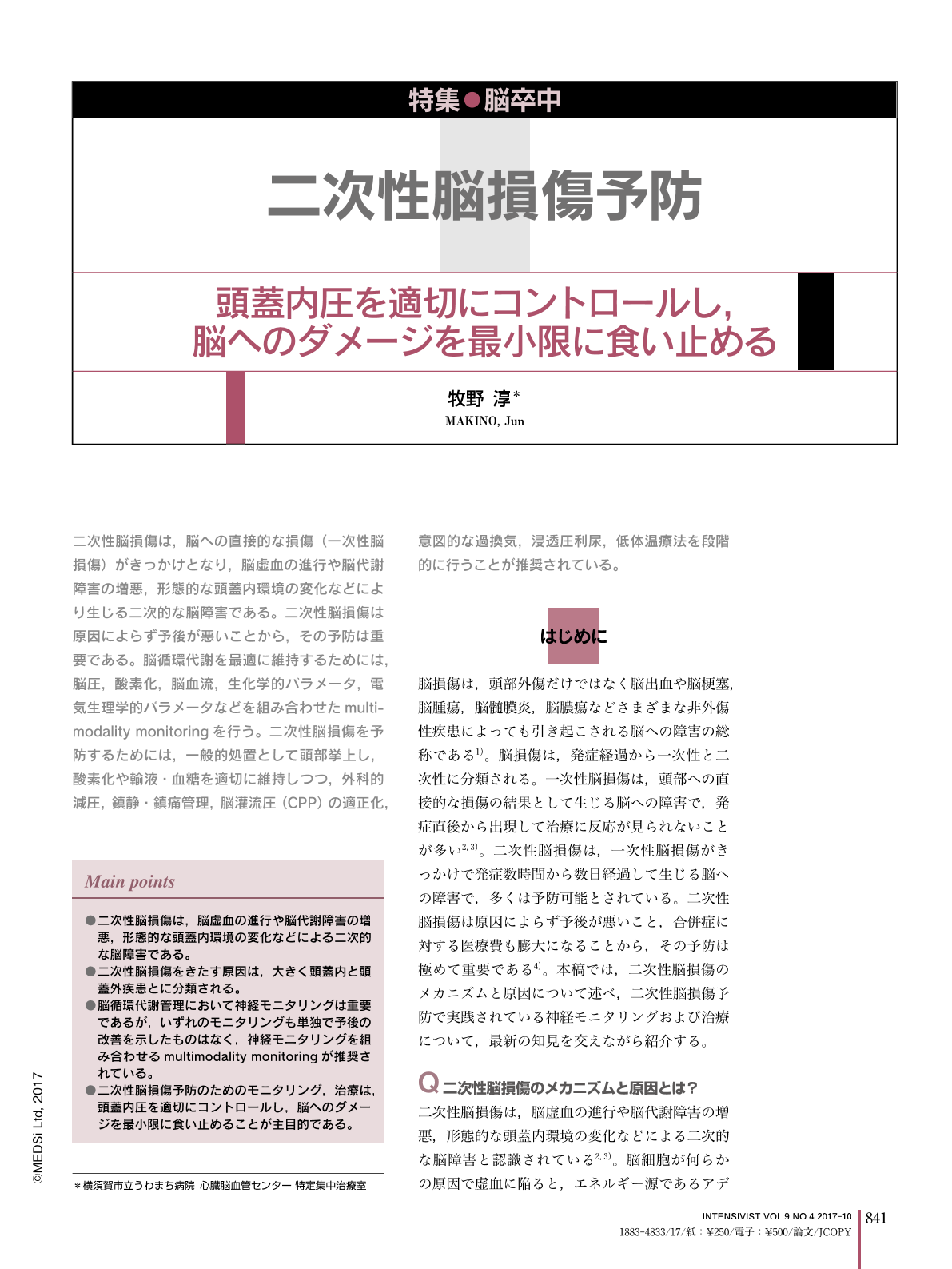Japanese
English
- 有料閲覧
- Abstract 文献概要
- 1ページ目 Look Inside
- 参考文献 Reference
二次性脳損傷は,脳への直接的な損傷(一次性脳損傷)がきっかけとなり,脳虚血の進行や脳代謝障害の増悪,形態的な頭蓋内環境の変化などにより生じる二次的な脳障害である。二次性脳損傷は原因によらず予後が悪いことから,その予防は重要である。脳循環代謝を最適に維持するためには,脳圧,酸素化,脳血流,生化学的パラメータ,電気生理学的パラメータなどを組み合わせたmultimodality monitoringを行う。二次性脳損傷を予防するためには,一般的処置として頭部挙上し,酸素化や輸液・血糖を適切に維持しつつ,外科的減圧,鎮静・鎮痛管理,脳灌流圧(CPP)の適正化,意図的な過換気,浸透圧利尿,低体温療法を段階的に行うことが推奨されている。
Main points
●二次性脳損傷は,脳虚血の進行や脳代謝障害の増悪,形態的な頭蓋内環境の変化などによる二次的な脳障害である。
●二次性脳損傷をきたす原因は,大きく頭蓋内と頭蓋外疾患とに分類される。
●脳循環代謝管理において神経モニタリングは重要であるが,いずれのモニタリングも単独で予後の改善を示したものはなく,神経モニタリングを組み合わせるmultimodality monitoringが推奨されている。
●二次性脳損傷予防のためのモニタリング,治療は,頭蓋内圧を適切にコントロールし,脳へのダメージを最小限に食い止めることが主目的である。
Secondary brain injury occurs following a direct impact to the head which causes worsening cerebral ischemia, cerebral metabolic dysfunction or morphological changes in the brain. Due to dismal outcomes regardless of the etiology, the role of prevention is critical. To maintain appropriate cerebral blood flow and metabolism, multimodal monitoring of intracranial pressure, oxygenation, cerebral perfusion, biochemical parameters and electrophysiological parameters has been developed. Stepwise management is recommended for the prevention of secondary brain injuries. The initial step includes general interventions such as head elevation, maintenance of adequate oxygenation, euvolemia and normoglycemia. After the initial interventions, stepwise implementation of the following components is recommended : surgical decompression, management of sedation and analgesia, maintenance of appropriate cerebral perfusion pressure, hyperventilation, osmotic diuresis, and hypothermia.

Copyright © 2017, MEDICAL SCIENCES INTERNATIONAL, LTD. All rights reserved.


